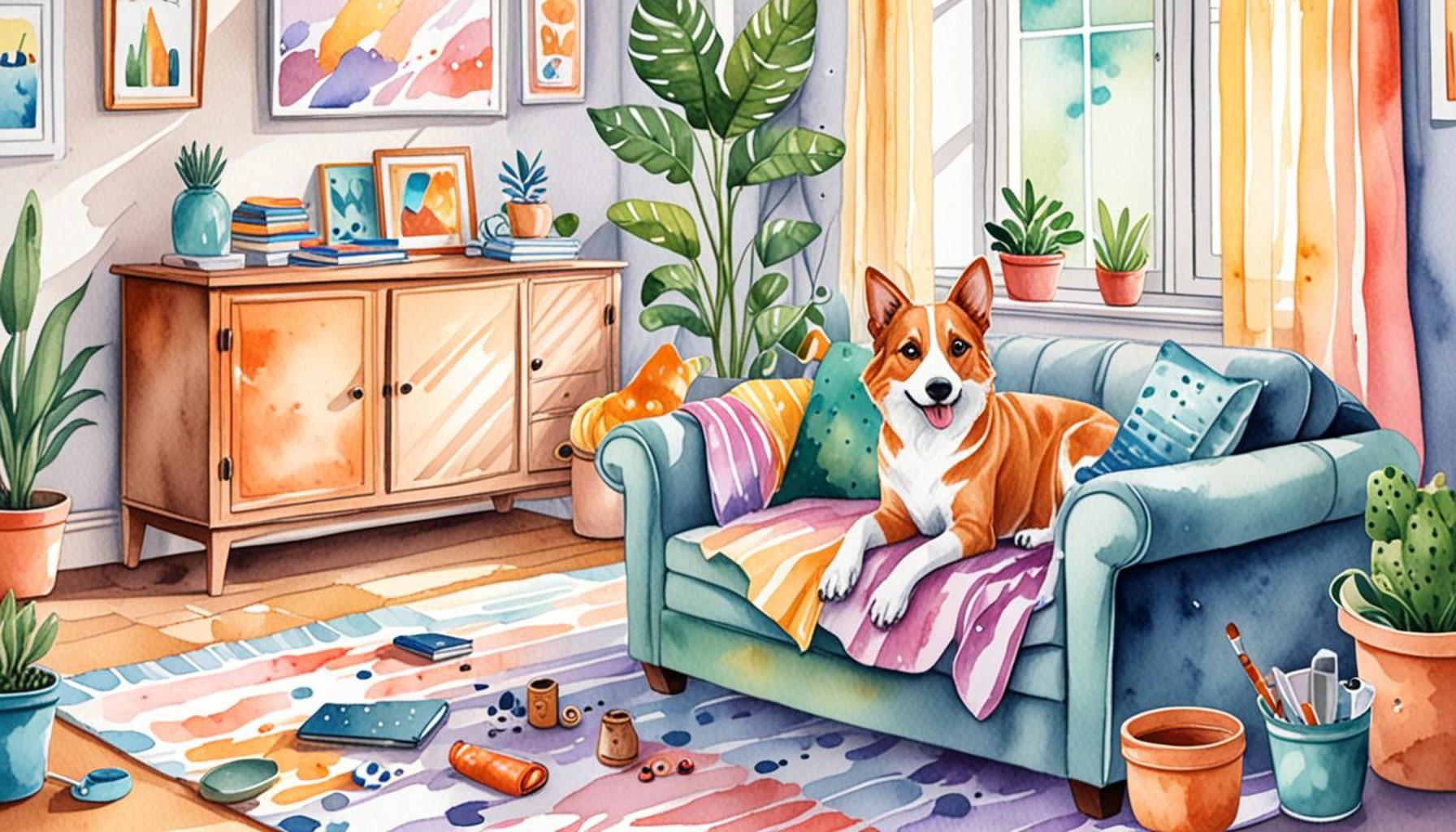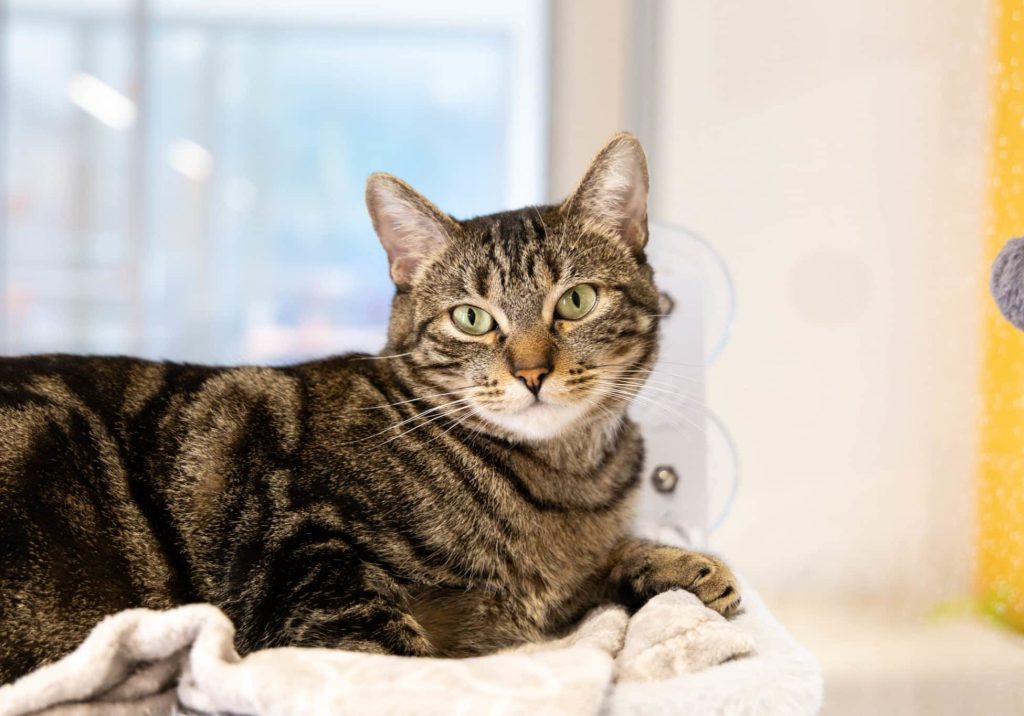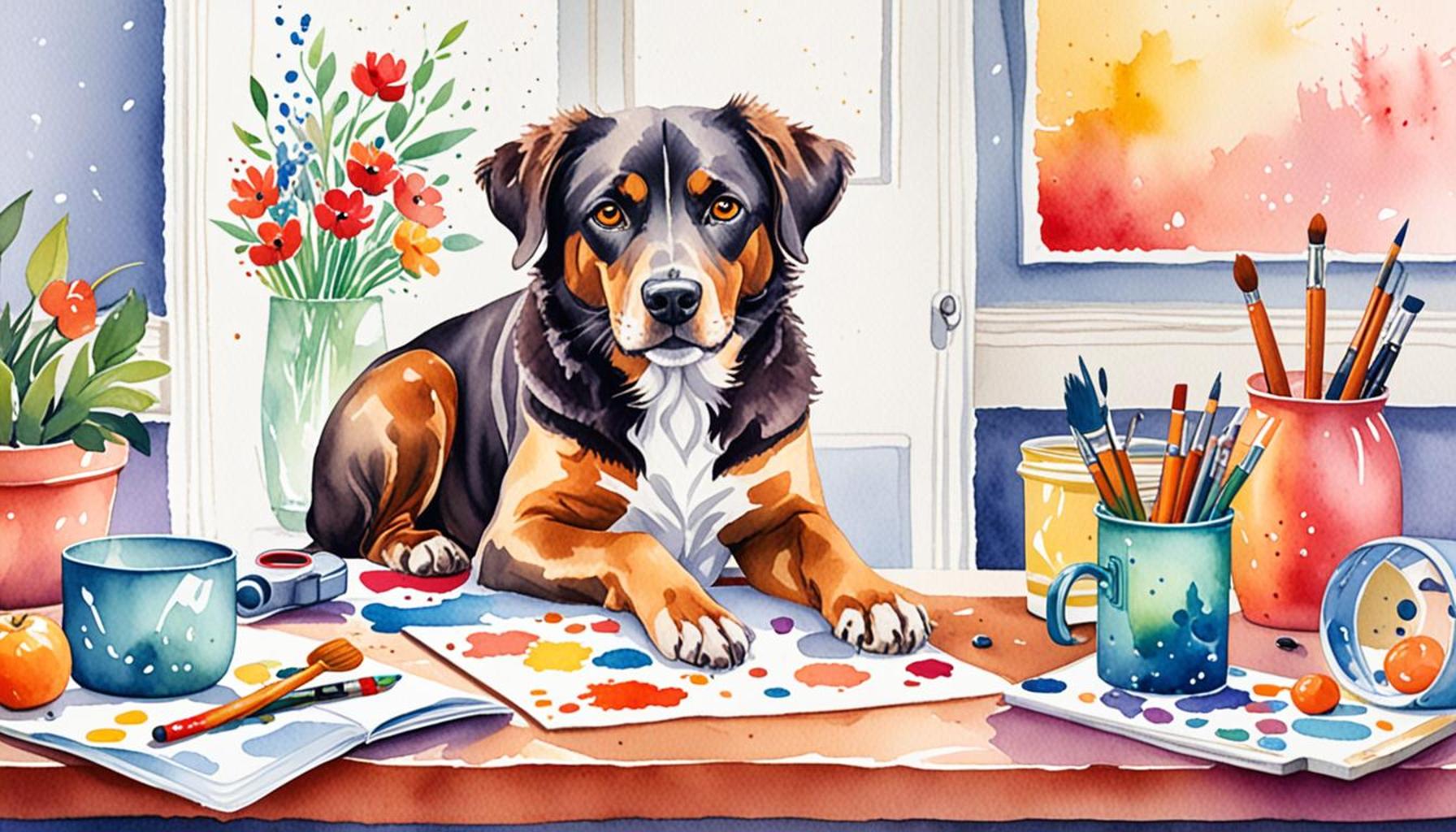Tips for Creating a Safe and Comfortable Space for Pets at Home

Creating a Safe and Comfortable Space for Your Pets
Designing a welcoming environment for your pets goes beyond mere aesthetics; it plays a vital role in their physical and psychological well-being. A well-thought-out living space can reduce anxiety, prevent injury, and enhance the overall quality of life for your furry companions. Understanding your pet’s specific needs—whether they be social, physical, or environmental—is crucial for creating a sanctuary that feels safe and comfortable.
Essential Elements of a Pet-Friendly Home
When setting up a home that caters to your pets, several key elements should be considered:
- Secure environment: Begin by surveying your space for potential hazards. Common dangers include toxic houseplants like lilies and philodendrons, exposed electrical cords that might tempt chewing, and small objects such as buttons or coins that pets could accidentally ingest. It might be beneficial to create a checklist of household items that could jeopardize your pet’s safety, ensuring you cover all your bases.
- Designated areas: Clearly defined zones for relaxation, play, and sleep can help pets feel more at home. For example, you can create a cozy corner with a soft bed and blankets for napping, while setting up a dedicated space with toys for playtime. This separation not only encourages appropriate behavior but also reduces stress by providing your pets with areas tailored to their needs.
- Comfortable furnishings: Opt for pet-friendly furniture made from durable, non-toxic materials. Look for high-quality dog or cat beds with orthopedic support to accommodate older pets. Additionally, consider using washable fabrics that are resistant to stains and odors, ensuring that the space remains fresh and inviting.
Regular Maintenance and Healthier Atmosphere
Maintaining a clutter-free environment is crucial for your pet’s safety and well-being. This means regularly cleaning spaces to reduce potential hazards. For instance, keeping pet food stored securely can prevent accidental poisonings. Additionally, ensuring that toxic cleaning agents are stored out of reach is essential. Proper ventilation is equally important; opening windows or using air purifiers can contribute to a fresher atmosphere, boosting both your health and that of your pets.
The Importance of Enrichment
In the United States, many pet owners may not realize the need for environmental enrichment. Investing in interactive toys, puzzle feeders, or even training tools can stimulate your pet’s mind and prevent boredom. Activities such as hide-and-seek with treats or engaging in training sessions can significantly strengthen the bond between you and your furry companion. Plus, incorporating elements like scratching posts or climbing trees can provide physical outlets for cats and dogs alike.
Conclusion
As you continue to explore the dynamics of a pet-friendly home, you’ll uncover various strategies that not only prioritize safety and comfort but also elevate the joy and enrichment of your pet’s daily life. By nurturing an environment that meets your pet’s needs, you not only foster happiness but also cultivate a deeper connection with your beloved companions.

DISCOVER MORE: Click here to learn how to choose the best food for your special needs dog
Key Considerations for Your Pet-Friendly Space
Creating a safe and comfortable space for your pets involves careful planning and attention to detail. By incorporating the right elements into your home, you can provide an environment that minimizes stress, promotes well-being, and keeps your beloved companions secure. Here are some crucial considerations to keep in mind:
Safe Space Design
When it comes to safety, an essential first step is to identify and eliminate potential hazards in your home. From chewed electrical cords to toxic plants, a proactive approach can avert accidents. Review the following safety tips to ensure your pet navigates a protected space:
- Pet-proof your home: Check for hazardous items within reach, such as small objects, loose wires, and toxic household cleaners. Secure cabinets containing chemicals or medications to deter curious paws.
- Install safety gates: Use safety gates to limit access to stairs or rooms that may pose risks to your pets, especially for puppies or kittens still learning their boundaries.
- Protect furniture and surfaces: Employ corner guards and couch covers made from pet-friendly materials to safeguard against scratches and stains, preserving both your furniture and your pet’s well-being.
Creating a Cozy Sanctuary
A designated resting area can greatly enhance your pets’ comfort and sense of security. By crafting a cozy retreat, you provide them with a place to recharge and feel safe. Consider these tips for establishing an inviting pet sanctuary:
- Choose the right bedding: Select soft, high-quality pet beds that offer support and warmth. Consider orthopedic options for older pets to ensure they enjoy restorative sleep.
- Personalize the space: Add familiar blankets, toys, or even a piece of your clothing to create a comforting atmosphere in their designated area, thereby making them feel more at home.
- Utilize natural light: Position the resting area near a window to allow your pets to bask in sunlight, which can improve their mood and overall health.
Fostering a Calm Environment
In addition to physical layouts, the overall ambiance also plays a significant role in your pets’ happiness. Reducing noise levels and creating a peaceful atmosphere can greatly alleviate anxiety. Implement the following strategies to enhance tranquility in your home:
- Noise control: Use rugs and curtains to dampen sounds and create a quieter environment. Additionally, consider pet-friendly white noise machines to soothe pets during thunderstorms or fireworks.
- Aromatherapy: Some pets respond positively to calming scents, such as lavender or chamomile. Essential oil diffusers or infused pet bedding can promote relaxation, but always ensure oils used are safe for animals.
By taking these actionable steps, you can help create a space that not only meets your pet’s practical needs but also nurtures their emotional well-being. As you refine your living space, remember that a comfortable environment is the foundation for a happy and healthy pet.
Creating a Peaceful Environment for Your Pets
When setting up a safe and comfortable space for your pets at home, consider their natural instincts and preferences. Pets thrive in environments that are both secure and enriching. Start by designating specific areas in your home where your pets can feel at ease. This could be a cozy corner with their bed, toys, and blankets, providing them with a sense of territory and safety.
Safety First: Evaluate Your Home
It’s essential to pet-proof your living space. Identify hazards such as exposed cords, toxic plants, or small objects that could be swallowed. Secure heavy furniture to prevent tipping, and ensure all cleaning supplies are stored in inaccessible areas. Regularly check for potential threats that may arise as your pet explores their environment, adapting and modifying their space to keep them safe.
Comfort Matters: Temperature and Texture
Consider the physical comfort of your pets. Temperature control is crucial—ensure that the space is adequately ventilated and not too hot or cold. Providing a variety of surfaces for your pets to sit on, such as plush blankets or cooling mats, can enhance their comfort and encourage them to settle down.
Social Interaction: Quality Time with Pets
Finally, remember that a sense of belonging is key to your pet’s happiness. Spend time in their designated space, engaging them through play or relaxation. This not only strengthens your bond but also reassures them that their designated area is a safe space filled with love. By combining safety, comfort, and social interaction, you create an environment that supports your pet’s well-being while enhancing their quality of life. Below is a table that summarizes important aspects of creating a pet-friendly environment.
| Category | Details |
|---|---|
| Safety Measures | Secure hazardous items & create a safe zone |
| Comfort Features | Provide comfortable bedding and temperature control |
| Social Engagement | Spend quality time to build trust & reduce anxiety |
With these strategies, you can foster a secure and inviting environment where your pets feel loved and happy.
DISCOVER MORE: Click here to learn how nutrition affects your pet’s mood
Enriching Your Pets’ Living Experience
While safety and comfort are paramount, enriching your pets’ environment is equally important to ensure that they lead happy, fulfilling lives. Providing mental stimulation and physical activity not only combats boredom but also fosters a deeper bond between you and your furry friends. Here are some engaging ways to enhance your pets’ living experience:
Interactive Play Areas
Creating spaces dedicated to play can significantly boost your pet’s physical health and mental agility. Allocating specific areas for toys and activities invites exploration and interaction. Consider the following ideas:
- Designate play zones: Choose a room or an area in your backyard where pets can safely enjoy their toys and engage in play without worry. Use pet gates to ensure they remain in a secure environment.
- Incorporate puzzle toys: Puzzle toys can challenge your pet’s mind, keeping them entertained while helping to reduce anxiety and destructive behaviors. Research shows that mental stimulation is just as important as physical exercise.
- Rotate toys: Keep things fresh and exciting by rotating your pets’ toys every week. This not only maintains their interest but also makes playtime more engaging.
Outdoor Exploration
Access to a safe outdoor area can significantly enhance the quality of life for your pets. Whether you have a spacious yard or simply a balcony, take advantage of outdoor time:
- Secure fencing: Ensure that fencing around your yard is intact and tall enough to prevent escapes. If you don’t have a yard, consider nearby parks specifically designed for pets, as they offer a safe environment for socialization and exercise.
- Outdoor pet enclosures: For apartments or smaller homes, movable pet enclosures can allow pets to enjoy the outdoors while keeping them contained and safe from potential dangers.
- Create a sensory garden: Plant safe flowers and herbs that can intrigue your pets, such as catnip for cats or mint for dogs. Allowing pets to experience new scents, textures, and sounds in a controlled setting can be highly enriching.
Routine and Structure
Providing your pets with a consistent daily routine helps forge a sense of security and familiarity in their lives. A structured environment can drastically improve their emotional stability:
- Establish feeding times: Set specific feeding times to create predictability in their daily habits. Use interactive feeding dishes to extend mealtime and keep them engaged.
- Regular exercise schedule: Designate specific times daily for walks, play sessions, and training exercises. Regular exercise can better manage behavioral issues while ensuring your pets are healthy.
- Utilize positive reinforcement: Incorporate training sessions as part of your daily routine. Reward-based training not only teaches your pets obedience but also strengthens the bond of trust between you.
Further, consider incorporating safety features like pet cameras to monitor your pet’s activities while you’re away. This way, you can ensure all is well and gain insights into their behaviors, allowing you to make any necessary adjustments to their environment or routine.
By balancing safety, enrichment, and structure in your pet’s daily life, you are laying the groundwork for a nurturing environment that enables them to flourish. As they adjust to their safe haven, your pets will undoubtedly thrive, bringing joy and companionship into your home.
DISCOVER MORE: Click here to learn about the best food for your pet
Conclusion
In summary, creating a safe and comfortable space for pets at home requires a multifaceted approach that prioritizes both physical security and emotional well-being. By adhering to the guidelines of securing your environment, enriching your pets’ living experience, and establishing a consistent routine, you are setting the stage for your furry friends to thrive. Remember, each pet is unique, and their needs may vary based on factors such as age, breed, and personality.
Moreover, recognizing the importance of interactive play, outdoor exploration, and a structured daily schedule can greatly enhance your pets’ quality of life. As you strive to create this safe haven, consider investing in pet-friendly furniture, durable toys, and secure outdoor spaces that cater to their instincts. Additionally, incorporate elements that stimulate their minds and bodies through activities such as training and puzzle toys. This comprehensive perspective fosters not only a safe environment but also strengthens the bond you share with your pets.
Ultimately, the journey of creating a comfortable and enriching home for your pets is an ongoing process, enriched by your dedication and love. By prioritizing their safety, comfort, and happiness, you enable them to flourish and bring immeasurable joy into your life. So take the time to evaluate your home and make the necessary adjustments; your pets will thank you with their unwavering companionship and affection.



